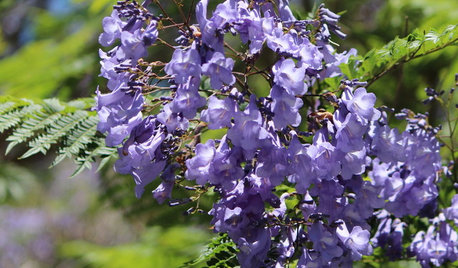Need advice about Roma Tomatoes
TheMasterGardener1
11 years ago
Related Stories

EDIBLE GARDENSSummer Crops: How to Grow Tomatoes
Plant tomato seedlings in spring for one of the best tastes of summer, fresh from your backyard
Full Story
FARM YOUR YARDAdvice on Canyon Farming From L.A.'s Vegetable Whisperer
See how a screened garden house and raised beds help an edible garden in a Los Angeles canyon thrive
Full Story
KITCHEN SINKSEverything You Need to Know About Farmhouse Sinks
They’re charming, homey, durable, elegant, functional and nostalgic. Those are just a few of the reasons they’re so popular
Full Story
KITCHEN DESIGNKitchen of the Week: Making Over a Rental for About $1,500
Fresh paint, new hardware, added storage, rugs and unexpected touches breathe new life into a Los Angeles apartment’s kitchen
Full Story
KITCHEN DESIGN3 Steps to Choosing Kitchen Finishes Wisely
Lost your way in the field of options for countertop and cabinet finishes? This advice will put your kitchen renovation back on track
Full Story
DECORATING GUIDESFrom Queasy Colors to Killer Tables: Your Worst Decorating Mistakes
Houzzers spill the beans about buying blunders, painting problems and DIY disasters
Full Story
GARDENING GUIDESCommon Myths That May Be Hurting Your Garden
Discover the truth about fertilizer, soil, staking and more to keep your plants healthy and happy
Full Story
KITCHEN DESIGNDetermine the Right Appliance Layout for Your Kitchen
Kitchen work triangle got you running around in circles? Boiling over about where to put the range? This guide is for you
Full Story
CALIFORNIA GARDENINGCalifornia Gardener's July Checklist
Bite into tree-fresh apricots, inhale delightful garden perfumes and continue planting vegetables for a late-summer harvest
Full StoryMore Discussions







digdirt2
TheMasterGardener1Original Author
Related Professionals
Zion Landscape Architects & Landscape Designers · Arlington Landscape Contractors · Buford Landscape Contractors · Brookside Landscape Contractors · Bell Gardens Landscape Contractors · Bethel Park Landscape Contractors · Pleasant Hill Landscape Contractors · Soddy Daisy Landscape Contractors · Streamwood Landscape Contractors · Northlake Landscape Contractors · Champaign General Contractors · Saint George General Contractors · Torrington General Contractors · Larkspur Decks, Patios & Outdoor Enclosures · Sun Lakes Decks, Patios & Outdoor Enclosuresmissingtheobvious
digdirt2
fusion_power
TheMasterGardener1Original Author
digdirt2
TheMasterGardener1Original Author
Keary
Keary
missingtheobvious
Keary
digdirt2
missingtheobvious
Keary
missingtheobvious